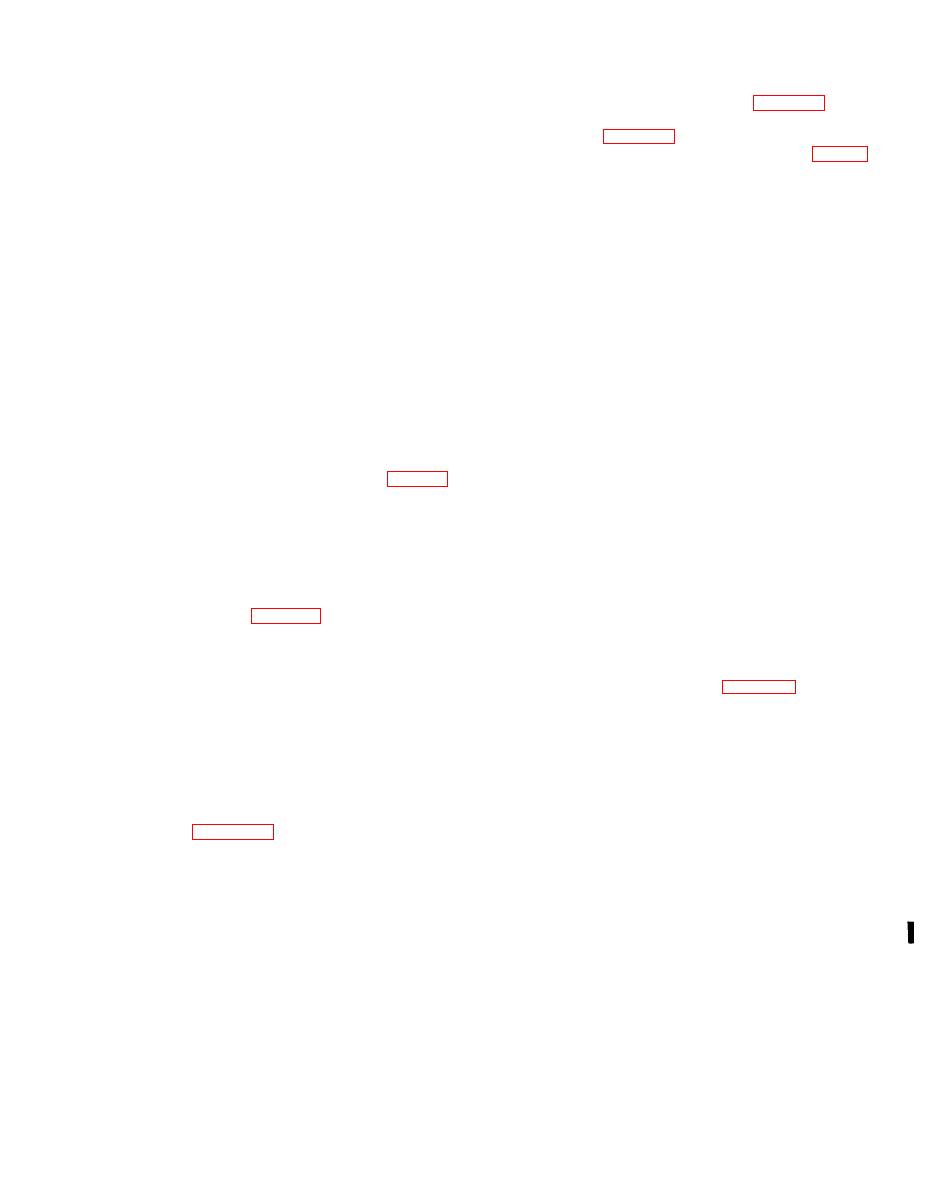
TM 5-4930-218-14
(2) Drain the fuel tank into a container using the
(1) Remove the enclosure (para 4-17).
fuel shutoff valve (20).
(2) Drain the fuel tank and remove fuel lines and
(3) Disconnect the fuel tube assembly (8) and the
fittings (para 4-20).
fuel pump hose (6) and related fittings (7, 9, and 10)
(3) Disconnect the ground lead (16, fig, 4-3).
from the fuel strainer (13) and fuel tank (26). Discon-
(4) Remove the screws (14) and lock washers (15)
nect opposite end of fuel pump hose (6) from the car-
that secure the fuel tank sending unit (17) to the fuel
buretor.
tank; remove the sending unit.
(4) Remove the shutoff valve (20) and its fittings
(5) Remove the cap screws (22), nuts (23), lock
(19 and 21).
washers (24), and flat washers (25) that secure the
(6) If the fuel housing and cap assembly (3) is
fuel tank (26) to the skid base; remove the fuel tank.
b. Cleaning and Inspection.
damaged, loosen the nut and rotate the handle to
release the housing and cap assembly. Remove the
(1) Flush out the fuel tank with dry cleaning
assembly and the gasket (4).
solvent (fed. spec. P-D-680). Wipe off the fuel tank
(6) Remove the nut (11) and washer (12), and
sending unit with a cloth dampened with solvent.
remove the fuel strainer (13).
b. Cleaning and Inspection.
WARNING
(1) Clean all metallic parts with dry cleaning
You are not authorized to repair the
solvent (fed. spec. P-D-680); dry thoroughly. Wipe the
fuel tank. If emergency repairs are
hoses with a cloth dampened lightly with solvent.
required, do not perform any welding
(2) Check the fuel hose assembly and fuel tube
or other fuel tank repairs that involve
assembly for cracks, clogging, damaged threads.
heat or spark without first purging all
Replace if damaged.
gasoline fumes from the tank. Failure
(3) Service the fuel strainer (para 3-9a), Replace
to heed this warning may result in a
the filter element if clogged.
severe explosion that could cause in-
(4) Inspect all fittings for damaged threads,
jury or death.
cracks, and other damage; replace damaged parts.
(5) Inspect the fuel hose for cracks, tears, and
(2) Inspect the fuel tank for cracks, severe dents,
deterioration; replace a damaged fuel hose.
and damaged threads. Replace damaged fuel tank.
c. Reassembly and Installation. Reassembly and in-
(3) Inspect the fuel tank sending unit for cracks,
stallation are the reverse of removal and disassem-
rough or catching movement of the float, and for
bly. Refer to figure 4-3. After reassembly, fill the fuel
damaged terminals. Replace a damaged sending unit,
tank and cheek for leaks.
c. Reassembly and Installation. Reassembly and in-
stallation of the fuel tank is the reverse of removal
a. Removal and Disassembly.
and disassembly. Refer to figure 4-3.
Section X. ENGINE ELECTRICAL SYSTEM
connected to the engine through a tube assembly.
4-22. General
The high oil temperature switch is connected to an
a. The engine electrical system is powered by the
adapter at the front of the engine under the starting
two batteries mounted in the battery drawer. Refer
pulley.
to figure 1-3 for the engine electrical system
diagram. Battery charge is maintained by the
engine-mounted generator. The system provides
current to power the starting motor to enable you to
a. Service. To charge batteries, proceed as follows
crank the engine and to provide power to the engine
(1) Remove caps and check the electrolyte level
controls. This system also provides power to the
in each cell. If any are low, fill to proper level with
trouble light reel.
distilled water TM 9-2610-200-20).
WARNING
b. Two oil pressure sensors and one oil temperature
censor are mounted on the engine and connected into
Do not smoke or use an open flame in
the engine electrical system to protect the engine
the vicinity when servicing the bat-
against low oil pressure conditions and overheating.
teries. Batteries generate hydrogen
The low oil pressure switch and the oil pressure sen-
gas, which is highly explosive.
der are mounted on a manifold on the engine base,
(2) Start engine and allow it to run for 10 to 15


